Nine is universal, all-containing symbol. It is the end and the beginning. They are adventurous, often impulsive nature will attract them to a wide variety of interests and people, and it is their mind that finds their greatest fulfillment or disappointments. All Nines birthdays have the tremendous pull of knowledge, and if they are willing to serve people by sharing their experience, surrender ego, Nines will indeed find a life of happiness and satisfaction. The Nine has all that takes to realize their high destiny.
Nine of Club people have warm and friendly personalities and a good sense of responsibility and obligations. They keep promises and pay debts.
Nine of Clubs is an adventurer's card. They are willing to take a chance just out of curiosity or interest. They like extreme sports and activities. They take risks and gamble. Interest might be developed in military affairs, forms of governments, politics, welfare movements, etc. As Nine of Clubs, they must promote independence and learn how to rule their life.
Nine of Clubs have enormous power to heal themselves. Any illness is usually due to nerves, emotions, and imagination, and entirely in their control. Once they realize this ability, it will be difficult to break up. From this perspective, as a doctor, nurse or working with sick people, they can be assured of an excellent income.
Home and family is paramount to Nine of Clubs. They need love and want to be loved. They usually desire to establish relationships with one person, but sometimes people they meet aren't the best. Very emotional and extremely sensitive, many Nine Of Clubs develop over-dependence and can be easily hurt in close relationships. Their fear of losing loved ones may turn into worry and sometimes into obsession and jealousy.
Work may not be securely established before thirty-six. When it is, Nine of Clubs are contented and freed from uncertainty. They desire to help others and successful in dealing with organizations. They are more comfortable to work in partnerships than to be the boss. They make great reliable directors of the affair of others. They usually know how to handle other's finances and enterprises. If they choose to make their own business, they benefit from foreigners and foreign countries. They also may develop extrasensory perception if they work on it.
Laziness and tendency might overthrow excellent mental qualities of Nine of Clubs to self-indulgence. Children might expose some issues, so many times Nine if Clubs, especially men, choose not to have children on their own. Nine of Clubs mission can be fulfilled in serving people with their knowledge. They are energetic and sociable. Many Nine of Clubs men are very passionate, and women find them attractive. Many actors are associated with this card.
Celtic Astrology Sign: Willow Tree – April 15 – May 12
If you were born between April 15th and May 12th, then your sign in Celtic tree astrology is the WILLOW TREE.
In Celtic astrology the moon symbolizes the willow tree. Throughout history the willow tree was known as the tree of charm and magic. The Celtics associated the tree with poets.
New lovers would often wear a piece of willow to associate the strength and prominence of the Goddess Crone who was known as the old wise one.
General Characteristics Of Willow Tree Zodiac
Willow tree zodiac people symbolize the sign of change in Celtic astrology and change will be a common theme most of their lives. They are very creative, intelligent and intuitive people.
In their careers they should seek public positions like a teacher,counselor or public figure. They are often employed in dependable job positions.
Willow tree people may find it challenging to stay with one career. They may move from place to place often, but when they do establish a permanent place for themselves they often become leaders in their community.
Willows tend to grow in life very quickly and if they face setbacks they will swiftly regroup and start again, often becoming more tenacious and knowledgeable than when they first started.
Their family is important as they are very family oriented. Willow Druid sign people will usually marry at a young age and are attracted to partners that are either older or younger than them.
Their emotions run deep so when they do find the right partner. They are full of yearning and passion. They sometimes have a hard time expressing this to their partner. Close relationships mean a lot to them and their family and children become the top priority in their lives.
Celtic Ogham Symbol For the Willow Tree
The Willow tree sign Celtic Ogham word is Saille.
Strengths Of This Druid Zodiac
Celtic Willow tree zodiac people have the strength to deal with an incredible amount of change in their lifetime. Their intuitive powers and sharp awareness allow them to shine and go on to live a successful life. They realize that every situation lasts a small period of time. They are more patient than other signs.
They have a natural ability to gain and retain wisdom. They have a strong urge to be creative builders. They are great at managing money and have a love for the luxuries that come with good money management.
Willow Druid sign people can change their appearance quickly and they are naturally drawn to natural ways of healing. They can make great spiritual healers due to the magical connections that have within their sign.
Weaknesses Of This Druid Zodiac
Willow tree people tend to hold themselves back because they fear appearing too flashy and egoistic. They can be stubborn and come off as secretive.
They can appear closed off making it difficult for other people to get close to them. They can have sudden changes of mood that may prevent them from clearly analyzing a situation.
In their personal relationships they may have a hard time forgetting a slight and even more of a hard time forgiving. They may hold in some resentment which may restrict their future success. This may lead to sadness within their personal relationships.
Willow Tree Folklore: Celtic Animal Birth Sign
Their animal is the Adder which is known for their excellent memory or the sea serpent.
Ruling Deity Of The Willow Druid Zodiac
The ruling deity is the Celtic Moon Goddess.
Celtic Zodiac Compatibility
Willow tree people are compatible with Birch and Ivy.
Corresponding Western Astrology Sign
In western astrology the willow tree corresponds with the sign of Taurus.
Celtic Zodiac Sign Bull Cow
Spread the love
Celtic Zodiac Sign of the Bull and Cow
Celtic Zodiac Sign:
The Bull/Cow
The Bull/Cow
April 15 –
May 12
May 12
Personality Introduction for This Celtic Animal Sign:
Greetings dear Bull and Cow! Your Celtic zodiac sign is one of stability and dependability.
Greetings dear Bull and Cow! Your Celtic zodiac sign is one of stability and dependability.
What in the world would the rest of us zodiac signs do without you? We’d be spinning into chaos, no doubt. Why? Because you are the scaffolding upon which many of us rely. You are a foundational sign, possessing rock-solid virtues.
It’s important to note the difference between bull and cow in terms of Celtic zodiac sign meanings. On surface, the difference is a no-brainer. Bull=Male. Cow=Female. Both genders encompass overarching personality traits of this Celtic animal sign. However, depending on gender, there are a few nuances. For example: The sign of the cow resonates more to feminine energy. The cow is aligned with lunar attributes. This means moon symbolism like: Intuition, Motherhood, Fertility, Secretiveness. Conversely, the bull resonates male energy. It is aligned with solar attributes. This means sun symbolism like: Virility, Action, Fatherhood, Survival and Forthrightness.
Now with the particulars out of the way, let’s talk about your Celtic zodiac sign personality type. As a bull/cow you represent the Plymouth rock of the zodiac. Sure, there are other signs that display determination, solidity and constancy…but not to the extent you do. You are the go-to sign when folks need a shoulder to lean on. You are remarkably accountable and dependable. You are a cornerstone that stands strong…even if the building around you might be crumbling.
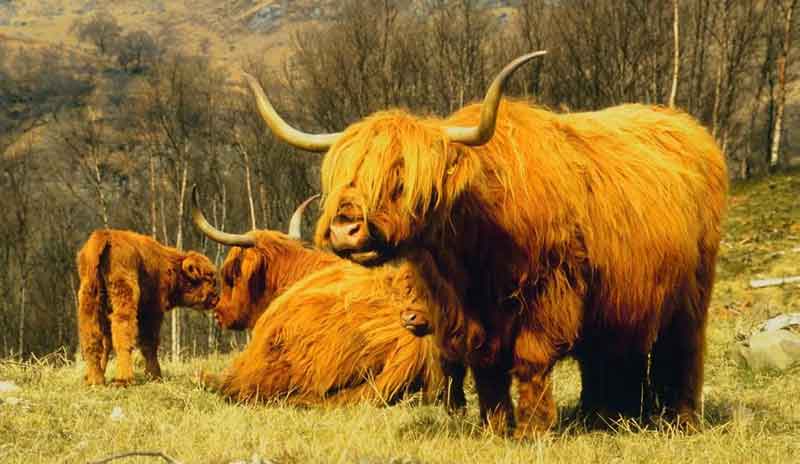
But for your sake, I hope there’s no crumbling. I mean, nobody likes disorder – but it hits you particularly hard. Change is not your bag, baby. Neither is chaos. Nope. You need structure, order and consistency. You’re under the impression that if something works fine the way it is – why change it? You don’t mind learning new things, but you’ve got to learn it your own way, at your own pace. If these requirements aren’t met, and your faced with changes without a plan in place…oh boy… that could mean anxiety-city for you.
As mentioned, you do your best work when you’re in an environment that is familiar and orderly. You do even better work when you’re surrounded by lovely stuff. Why? Because you’re a sucker for beautiful things. Nothing wrong with that! In fact, your appreciation for finery is a sign of your impeccable taste. You’ve got a knack for interior design. You just have a great eye for what looks good. Color, texture, scent…if it engages your senses in a pleasing way, you’re switched on by it. So much so, that you might find yourself in the business of collection. I know many bulls/cows who have impressive art collections, fine antiques too.
Speaking of collections, bulls/cows are kind of people-collectors too. That sounds creepy, so let me explain. Your Celtic zodiac sign admires and appreciates good fellowship. Rather than having many casual acquaintances, you hand-pick a few gems from the mines of your community. You tend to hold onto these friendships and connections, because you value the people you associate with. In truth, no better friend could be had in you. Why? Well, I tend to think your finest BFF quality is in your belief in another person. If someone is lucky enough to be in your friend-herd, they will find you are a champion on their behalf. If your pal needs back up – you’re there. Wingman? You’re it. Defender of the defenseless? Yep – you’re on it. You rally for your peeps. You encourage, uplift and support the people you care about.
“Work hard for what you want because it won’t come to you without a fight. You have to be strong and courageous and know that you can do anything you put your mind to. If somebody puts you down or criticizes you, just keep on believing in yourself and turn it into something positive.”
Indulge me a little story on this subject? My mom is a bull/cow. Now, I was a hellion of a kid. It seemed mom was forever visiting the principal’s office because I’d gotten up to no good at school. That’s when mom’s bull came out. She’d get so steamed up on my behalf! She would insist I was a complete angel, and that any wrongdoing HAD to be at fault with the school. LOL! My beautiful bull/cow mom! I share that story because this behavior is a tendency for your sign. You can be utterly blind to the wrongdoings of your loved ones. Well – I take that back. You probably know exactly how your beloved’s are little devils. But when it comes to public defense – you will stomp your hoof in righteous indignation on behalf of those you care for.
This kind of loyalty is especially evident in family life. Both bulls (male) and cows (female) are extremely family-centric. Cows are especially good at mothering, providing and nurturing. So are bulls, but in more of a mentoring way. Bulls like to teach their offspring by example. In other words, you bulls are strong role models for anyone under your wing. You cow-moms are too, but you tend to have a softer approach. Your sign develops a deep sense of self through family. You absolutely relish having loved ones close to you. Your family circle is a profound source of comfort. Now, this family stuff doesn’t have to be literal. Many bulls/cows adopt surrogate families, within which they derive the same level of comfort and pride. A tight-knit community of co-workers, colleagues, friends, etc. can serve as a strong family unit for bulls/cows – not just biological kin.
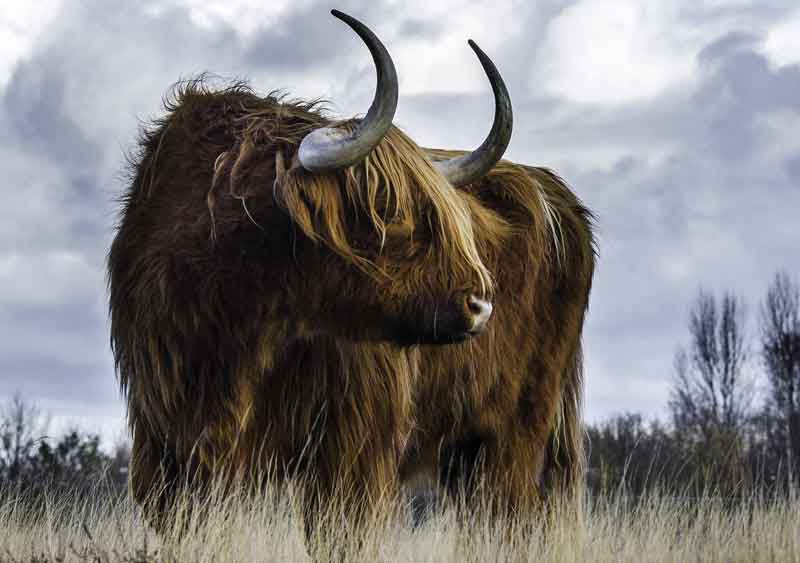
Keywords for Celtic Zodiac Sign of the Bull/Cow
- True
- Solid
- Loyal
- Caring
- Patient
- Steady
- Practical
- Inflexible
- Stubborn
- Protective
- Nurturing
- Trustworthy
- Dependable
- Materialistic
I want to take a moment to quantify a few of these keywords. Words like: Stubborn, Inflexible and Materialistic. These terms are sometimes viewed in a negative light. That’s not necessarily the case with you. Take materialism. As mentioned, you love good stuff. Nothing wrong with that. In truth, you rarely overspend. You’re quite frugal. You want to get the best value for your hard-earned buck. If you do crack open your wallet, it’s probably a sure bet that it’s going to be for something of fine quality. And what about being stubborn and inflexible? It’s true, change isn’t your best cuddle-buddy. You can stubbornly cling to old beliefs or habit, simply because you might be uncomfortable with a new, untested way of doing things. If all your systems are working optimally – then no big deal – no need for change – be as stubborn as you want! However, you and I both know that the only guarantee we have in life is change. Being stubborn is great when you’re staunchly standing for a noble idea, or protecting loved ones. But, when it comes to going with the flow, or moving with changing times…learning to be more flexible is a big lesson for some of you.
Noteworthy Aspects for Your Celtic Zodiac Sign
Element: Earth
Those of you born under the Celtic animal sign of bull/cow are ruled by the earth element. What does that mean? It means you got ground, baby. You want to know where you stand (you usually do), and that spot has got to be solid. You like things that serve as an anchor. Indeed, YOU are an anchor for many people, projects, etc. Being an earth sign also means you have a fine appreciation for nature. Many of you thrive when you’re gardening, or doing stuff outside. Earth signs giggle when they get dirty. You love the smell and feel of the earth, and that’s what makes many of you a natural ‘green thumb’. Bull/cow earth signs often get dirty in the kitchen too. Lots of you are fabulous cooks. But this isn’t always the case. I lost all my baby teeth on my bull/cow mom’s cooking. Sorry mom, just sayin’.
Sorry mom, just sayin’.
Those of you born under the Celtic animal sign of bull/cow are ruled by the earth element. What does that mean? It means you got ground, baby. You want to know where you stand (you usually do), and that spot has got to be solid. You like things that serve as an anchor. Indeed, YOU are an anchor for many people, projects, etc. Being an earth sign also means you have a fine appreciation for nature. Many of you thrive when you’re gardening, or doing stuff outside. Earth signs giggle when they get dirty. You love the smell and feel of the earth, and that’s what makes many of you a natural ‘green thumb’. Bull/cow earth signs often get dirty in the kitchen too. Lots of you are fabulous cooks. But this isn’t always the case. I lost all my baby teeth on my bull/cow mom’s cooking.
 Sorry mom, just sayin’.
Sorry mom, just sayin’.
Planet: Venus
The bull/cow is governed by the planet Venus. The symbolic theme of Venus deals with sensuality, beauty, love and pleasure. This is the planet of appreciation of the finer things in life. Under Venus’ influence, you are able to stop and smell the roses – you might cut a few and bring them inside to beautify the home too! Venus is also all about love and affection. When you’re in a comfortable, safe environment you have no problem expressing your loving side.
The bull/cow is governed by the planet Venus. The symbolic theme of Venus deals with sensuality, beauty, love and pleasure. This is the planet of appreciation of the finer things in life. Under Venus’ influence, you are able to stop and smell the roses – you might cut a few and bring them inside to beautify the home too! Venus is also all about love and affection. When you’re in a comfortable, safe environment you have no problem expressing your loving side.
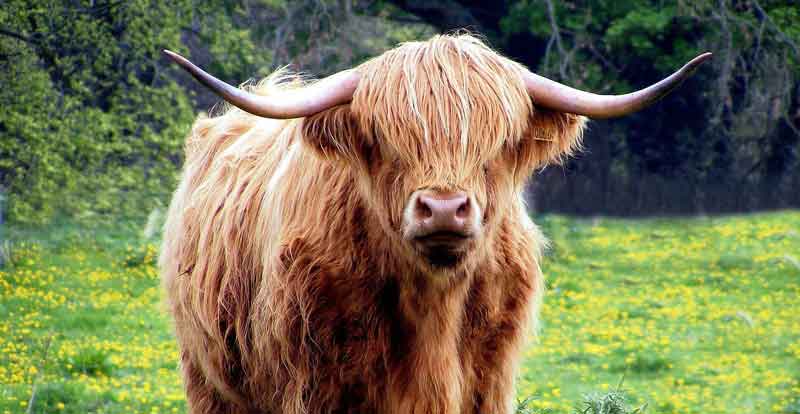
The Legend of Your Celtic Animal Sign
In Celtic myth and lore, the bull and cow are epic in symbolic meaning. Why? Because the bull was prized for its strength, virility and endurance. In fact, bulls were commonly incorporated in Celtic craftsmanship and art. The bull symbol was the mark of a strong warrior, and industrious worker. These marks also served as a blessing. In fact, bulls were sometimes embroidered on wedding sheets to insure prosperous offspring from the marriage bed.
Cows were similarly honored. They were also prized, for their durability – but also for the gifts they brought to the Celts. The life-giving milk cows offered was a luxury and an indulgence. Big gratitude was given to cows for sustaining the village with their milk.
Bulls and cows were also a kind of currency. Symbolically, they equated to riches and status. These animals were commonly traded. So, the more cows/bulls a Celt had, the better he was in a position for higher stature in the community.
Learn more about the power of the bull from a Celtic perspective here: Symbolic Bull Meanings . Or, check out Symbolic Cow Meanings here.
Closing Thoughts on Your Celtic Zodiac Sign
For those of you born between April 15 – May 12, I salute you. Heaven knows I’d be in a dire pickle if it weren’t for your encouragement and support. To be sure, bull/cow signs are vital to the stability of society. This is especially true for closer-to-home communities. Your sign is essential in the family, in the home and at the work place. You lay the groundwork of love, morality and sanity in an otherwise chaotic world. Thank you!
The Importance Of The Hare In Celtic Belief And Our Duty To Protect All Wildlife
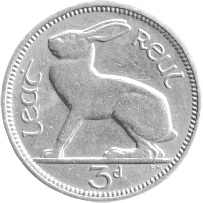
Landscape, seas and geographic location plays a pivotal role in Celtic peoples history, beliefs and recognition of themselves. Our culture tells us that we are part of and completely tied to the lands in which we live and the sea that surrounds us. Consequently, as might be expected, Celtic mythology and folklore place the natural world at centre stage. In these stories everything in nature possess a spirit and presence of their own, including mountains, rocks, trees, rivers and all things of the land and the sea. Also forming part of the landscape and stretching back into the mists of time are the cairns, mounds and standing stones that are to be found everywhere in the Celtic lands of northwestern Europe. So accepted as a natural feature that they are seen as creations not of man but of nature or even the supernatural entities that were thought to live alongside the world known to humans.
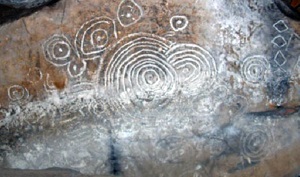
Solar eclipse etching on Cairn L, Cairnbane West
Solar eclipse etching on Cairn L, Cairnbane West
Megalithic monuments were not placed in a random way but were large ceremonial complexes constructed for specific purposes. We can deduce that astronomical alignments, both solar and lunar, were important factors in the positioning of these remarkable structures. Our ancestors thought the constellations gave a special meaning to the world. Stone circles, cairns, other types of ancient stone monuments and Neolithic carvings have shown the Celts to be advanced astronomers. Ancient stones and tombs are placed in a way that capture moments of astronomical importance. According to archeologists the ancient Irish were the first to record a solar eclipse 5,354 years ago. A geometric etching illustrating the eclipse is thought to lie inside the Cairn L. This is one of the two large focal monuments on Cairnbane West outside Kells in Ireland’s County Meath. The carving of concentric circles and lines is at the back of the chamber of the cairn. As reported in a recent article in the Irish Post:
It is thought to have been carved on 30 November, 3,340 BC, which fits the dates of the 92 solar eclipses in history tracked by Irish archaeoastronomer Paul Griffin. Experts at Astronomy Ireland have suggested that Neolithic astronomer priests made the carvings on stones and that it is likely the eclipse was viewed from the cairn.
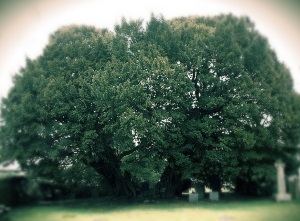
Old Yew Tree, St Digain’s Church, Llangernyw
Old Yew Tree, St Digain’s Church, Llangernyw
Celtic people, the direct descendents of those that constructed these great monuments, continued to revere the cairns. Seeing them as one of the entrances to the Otherworld where supernatural entities dwelt, including those associated with the Gaelic gods of the Tuatha Dé Danann. In Celtic mythology and folklore these manmade places ranked in importance alongside those of the natural world. Nature was paramount and the idea of animism (belief that non human entities have a spiritual essence), was widely held in the pre-christian Celtic pantheon and remains strong even today. Certain plants and animals hold particular significance; Horses, Cattle, Wolves and Ravens amongst many. Trees and flowers such as Oak, Holly, Apple, Hazel, Alder, Willow, Yew, Mountain Ash or Rowan and Elder. Different trees can have special magical properties depending on the particular Celtic nation. Although many hold special properties amongst all Celts such as the Ash, known in Old Irish as nin; Irish, fuinseog; Scots Gaelic, fuinnseann; Manx, unjin; Welsh, onnen; Cornish, onnen; Breton, onnenn.
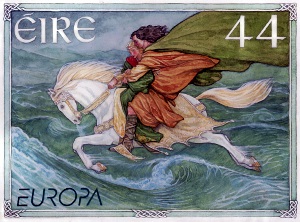
Depiction of Oisin
Depiction of Oisin
Rivers, lakes and waterfalls were also seen as very important and often associated with particular gods and goddesses such as Boann and Sionnan whose names live on in the Irish rivers of Boyne and Shannon. In ancient times objects were placed in rivers, bogs, lakes and springs as offerings. Amongst the animals held to have spiritual significance for the Celts was the Hare, (known to some in America as jackrabbits). The scientific name for the family group of rabbits and hares is Leporidae. Although hares and rabbits are in the same family they are different species. Generally hares are larger than rabbits, with longer ears, and have black markings on their fur. In the British Isles and Ireland there are three types of hares: the Irish Hare, the Common or Brown Hare and the Mountain or Blue Hare. They are generally herbivorous, have long-ears, are fast runners, and normally live alone or in pairs. Unlike rabbits hares do not bear their young below ground in Burrows, but in what is known as a form, which can be a nest of grass or a shallow depression. A hare less than one year old is called a leveret.
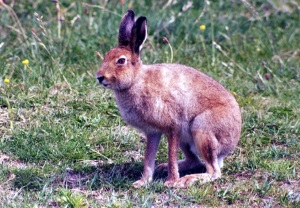
Irish hare
Irish hare
In Celtic mythology and folklore the hare has links to the mysterious Otherworld of the supernatural. The Irish hare is native to Ireland and carbon dating of fossils show they were present in Ireland as far back as 28,000BC. In Irish folklore the hare is also often associated with the Otherworld (Aos Si) community whose world was reached through mists, hills, lakes, ponds, wetland areas, caves, ancient burial sites, cairns and mounds. Those entities were seen as very powerful and the hares link to them sent a warning that those who harm them could suffer dreadful consequences. Shapeshifters were often said to take the form of the hare. There is a legend that the Celtic warrior Oisin hunted a hare, wounding it in the leg. Oisin followed the wounded animal into a thicket where he found a door leading down into the ground. He went in and came to a large hall where he found a beautiful young woman sitting on a throne bleeding from a leg wound.
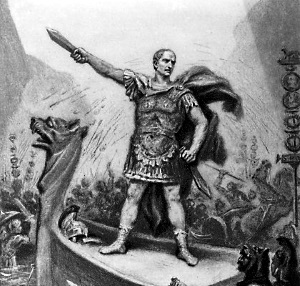
Depiction of Julius Caesar invading Britain
Depiction of Julius Caesar invading Britain
Celtic peoples looked on the hare as a creature with supernatural powers. This lonely creature was admired for strength, speed and was noted for being active at night and associated with the moon. They were seen as mysterious and magical, so thought of as an animal to be treated with caution. When the Romans invaded the British Isles, Julius Caesar made the observation that the Celtic people did not regard it lawful to eat the hare. In Ireland the animals association with women from the Otherworld who could shapeshift into the form of a hare also made eating them taboo. Its significance in Ireland was shown when for many years the Irish hare was depicted on the pre-decimal coin the threepenny piece. The hare has also featured in the mythology of other cultures for thousands of years. Including being associated with the Northern European Saxon Goddess Ēostre or Ostara. Easter takes its name from the pagan goddess Ēostre as mentioned by the English monk Bede in his work ‘The Reckoning of Time’ written in 725AD.
The hare is a remarkable and beautiful animal. Unfortunately hares, in common with other wildlife, are under threat in a human dominated world at this time. The 2014 Living Planet Report by the World Wildlife Fund show that wildlife populations have halved in the last 40 years. The report states that:
The biggest recorded threat to biodiversity globally comes from the combined impacts of habitat loss and degradation, driven by unsustainable human consumption.
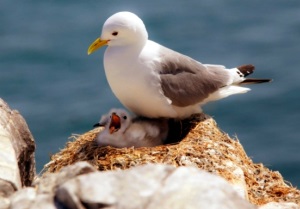
There has also been a dramatic decline in seabird populations. That was the conclusion of Canadian University of British Columbia (UCB) research. This showed that the world’s monitored seabird populations have dropped by 70 per cent since the 1950s. A UCB media release highlights the study of the Sea Around Us project and a report written on seabird population trends. They have compiled information on more than 500 seabird populations from around the world, representing 19 per cent of the global seabird population. They found overall populations had declined by 69.6 per cent, equivalent to a loss of about 230 million birds in 60 years.
The environmental destruction caused by world population growth is becoming ever clearer. Research shows that on current trends world food production will not be enough to meet the needs of the world’s growing population. The Science journal article 'World population stabilization unlikely this century' points to a study by the United Nations, which says there is an 80 per cent probability that by 2100 world population will increase from 7.2 billion to between 9.6 and 12.3 billion. Meanwhile and alarmingly the best that many politicians and economists can come up with is the notion of continued population increases as a means of securing economic growth. However, overdevelopment, exploitation, pollution and population growth increasingly encroach on the natural world. The more of us there are, the greater is our impact on the environment. It is now clearer than ever that an alternative economic model to the one of ever increasing growth is necessary. One that offers a long term perspective of real sustainability and both uses the world’s valuable resources to eradicate poverty and at the same time protect the environment.

Nature and the environment are not just issues related to ancient folklore and mythology for Celtic people. Although these stories do inform us of how important the balance between us and the rest of the natural world is to our culture. It is about how we work to protect natural habitats and our quality of life today and for the future. At this time there are pressures in all of the Celtic nations to drive forward policies that would result in significant population increases leading to environmental and cultural destruction. Wales, Cornwall and the Isle of Man have seen pressures to relax planning laws to allow innappropriate building developments that have to no regard to the impact on language, culture, local need and the environment.
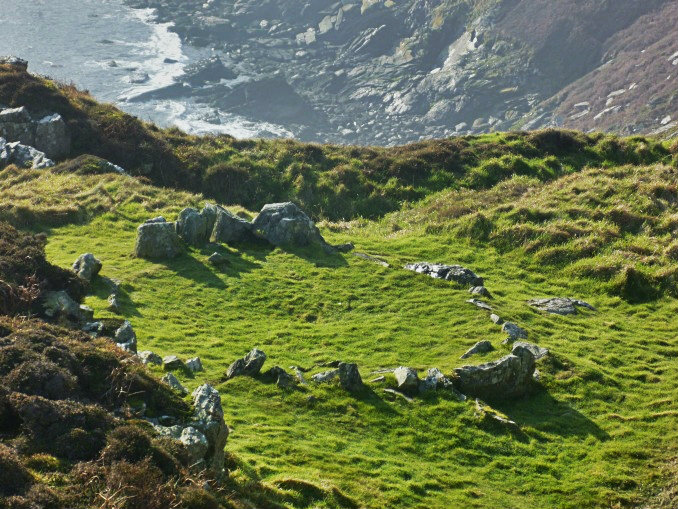
Cronk Karran, Isle of Man
Cronk Karran, Isle of Man
Make no mistake that those politicians that promote policies resulting in environmental destruction are falling under the direct influence of those driven by greed and who also have huge resources to back them up. In all of the Celtic lands and beyond we need to look carefully at what our local, regional and national political representatives are saying and doing about the issue. In particular we need to scrutinise their approach to any proposed damaging industrial and housing developments and populations increases that would encroach on wildlife habitats. Generations to come will not forgive us for standing aside and allowing further overdevelopment, overpopulation and the environmental vandalism that will inevitably follow.
Celtic Sea-Serpent Meaning, Mythology and Tattoos
THIS POST MAY CONTAIN AFFILIATE LINKS, MEANING I MAY GET A SMALL COMMISSION IF YOU DECIDE TO MAKE A PURCHASE THROUGH MY LINKS, AT NO COST TO YOU. PLEASE READ MY DISCLOSURE FOR MORE INFO.Article by Elizabeth
A Guide to the Celtic Meaning of Sea-Serpents
Ancient Celts believed sea-serpents were long, snake-like creatures with many humps, quite similar to the modern-day Loch Ness Monster.
The sea-serpent was a very important animal to the Celts. They believed that the Sun and the Moon were hatched from two crimson sea-serpent eggs hidden in a willow tree.
This led the Celts to give the sea-serpent multiple meanings ranging from transformation to various contradictory meanings, such as life and death, danger and assistance, illusion and reality.
Sea-Serpents in Celtic Astrology
The sea-serpent is the Celtic Animal Sign for people born April 15 – May 12. The sea-serpent is also the symbol for the Celtic Willow Tree Sign.
Celtic Sea-Serpent Mythology
In Celtic mythology, sea-serpents were a terrifying creature that reminded people of their mortality, and often, impending death.
The Irish Morrigan (the death aspect of the triple lunar goddess) would often take on the form of a sea-serpent when confronting heroes.
Both of these Celtic myths can be found in an ancient Irish tale about the Battle of Muirthemne – a battle between Cuchulain and Queen Maev. The Morrigan transformed into a black sea-serpent and attacked Cuchulain as he crossed a ford. The Morrigan's appearance confirmed that the battle would result in Cuchulain's death even though he managed to survive the Morrigan's attack.
Celtic Sea-Serpent Tattoo Meanings
Celtic sea-serpent tattoos often represent a connection to the Moon – from its control over the tides to how it intervenes in lives. As such, sea-serpent tattoos have the added meaning of duality – life and death, yin and yang.
Celtic sea-serpent tattoos can also signify how life is constantly changing; what we think is negative or harmful is simply an illusion.
Unforgettable Ethereal Crystal
An unforgettable ethereal crystal known for its ghostly, pearly sheen that moves under its surface - moonstone is as ancient and as mysterious as the moon itself. Known for bringing clarity into one’s life, it lights up the darkness and illuminates the hidden truths with the subtlety and the gentleness of the moonlight reflecting on the water’s surface at night.
What Is Moonstone?
Despite its name, there is no evidence that would suggest that this beautiful crystal originated from the moon. Scientifically, moonstone gem is a part of the feldspar mineral group - one of the most common groups found on the Earth’s crust. What makes it so special, then?
The most unique trait of the moon stones is something called adularescence - the optical phenomenon that causes the extraordinary glow on their surface. The light moves across the gem, creating the visual effect reminiscent of the full moon shining through a veil of thin clouds - hence the crystal’s name.
This happens when the light reflects off of the thin layers of different feldspar minerals within the moonstone. The layers act as diffusers, softening the light and allowing it to bounce around the stone. No one can stay unmoved or indifferent after being able to witness such a beautiful yet mysterious sight.
Moonstone History and Lore
This breath-taking gem has always been held in very high esteem in the East. In India, it is considered to be a sacred stone - it is believed to have been embedded in the forehead of Ganesh, the four-handed god of the moon. According to Hindu mythology, moonstone was made from moonbeams and could bestow gifts of prophecy and clairvoyance to the wearer. It was also used in a very peculiar way to invite wisdom into one’s life - by placing the stone in the mouth during the full moon.
In Ancient Rome, people yet again commonly believed that the moonstone gemstone was formed from solidified moonlight. Presumably, the Roman goddess Diana, goddess of the moon, could be seen within the stone. Moonstone was also thought to bestow plenty of gifts to the one who possessed it: love, wisdom and good fortune, to name a few.
Moonstone is a crystal of many myths and legends. One famous legend from Vedic history talks about the battle between Vishnu and Bali, the demon god. When Vishnu broke Bali’s body into pieces, the parts that fell on Earth turned into different jewels. The sparkle in his eyes became “Chandrakanta" or what we now call moonstones.
Another Eastern legend says that blue moonstones are only washed up by the ocean tides every twenty-one years, and another claims that moonstone eventually loses its pretty shine and sheen if the owner of the stone keeps a lot of anger pent up inside, deemed unworthy of such a glorious gift.
Moonstone Metaphysical Properties
Moonstone crystal is a healing stone that has been connected with water Zodiac signs. It is the official birthstone for the month of June and is also traditionally given in celebration of the 13th wedding anniversary.
This pearly gem is said to have many intuitive and emotional properties and has long been known for its calming and soothing effect. It is believed to help sort through one’s emotions and gain a higher perspective on their meaning and purpose. It can aid in releasing frustrations and can enhance composure required to stay objective in all situations.
Amidst other moonstone healing properties, this crystal is also capable of teaching us about the natural cycles in our lives. Also called the ‘’Stone of New Beginnings’’, Moonstone reminds us that everything is part of a cycle of change, and teaches one to let go in order to move forward when that is necessary.
Moonstone meaning is closely related to the receptive, passive, feminine energy, therefore, it is known for its ability to enhance the intuitive side of the mind. It is also considered to be a fertility stone and can raise the chances of getting pregnant. Moonstone is also commonly used to balance male-female energies and can help men who wish to get in touch with their feminine side, allowing them to see from a different perspective and reflect on their feelings the way they normally couldn’t.
Moonstone has an extra calming effect on children. It soothes them before bedtime, drives away nightmares and encourages sleep, so it is considered wise to keep a moonstone crystal near their bed. This is true not only when it comes to children, as grown-ups too can benefit from the soothing aura of this gem - it can be used to treat sleepwalking and can help one deal with insomnia.
In addition to the general moonstone properties outlined above, certain varieties of this crystal tend to have additional effects:
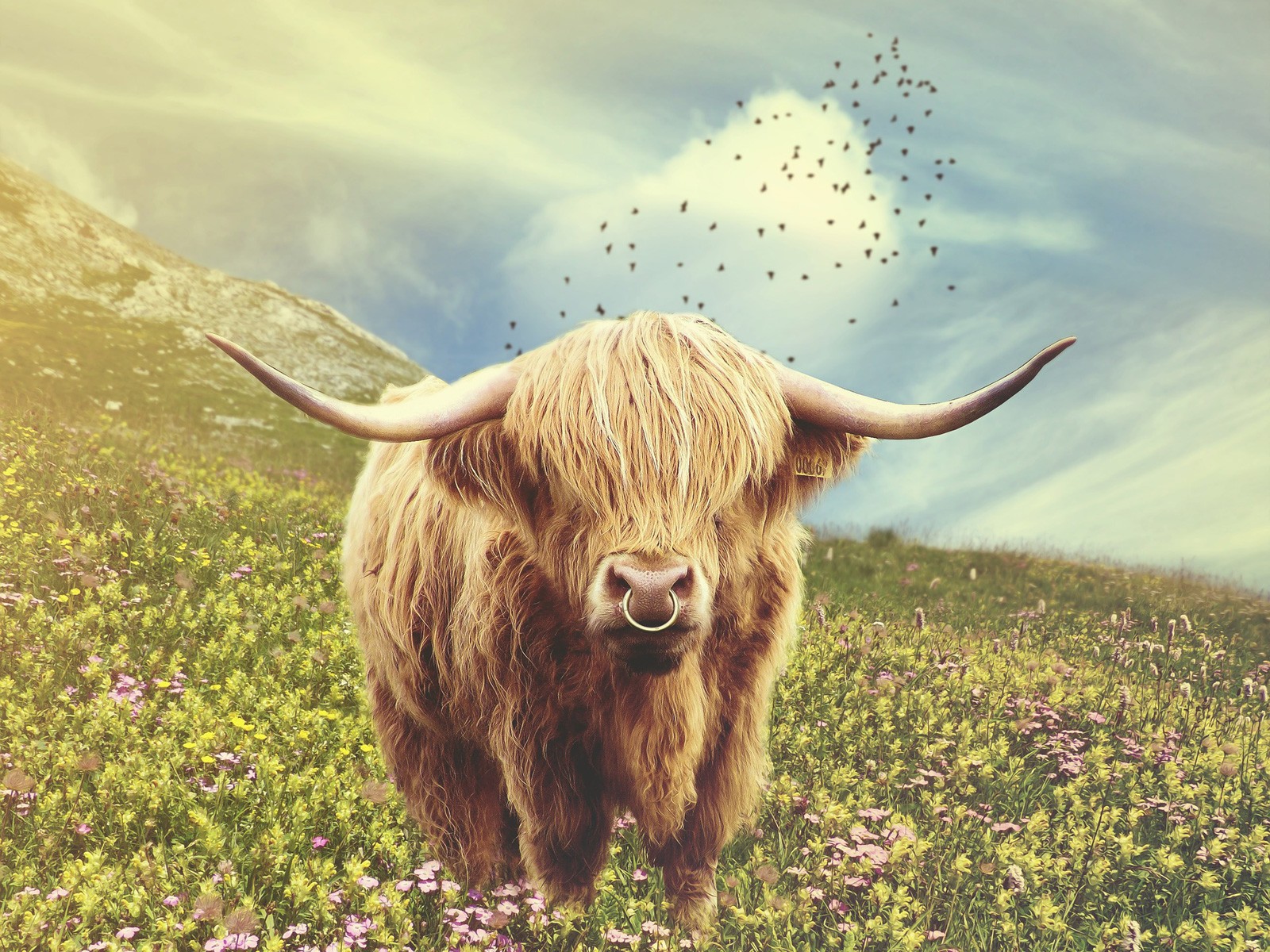


No comments:
Post a Comment